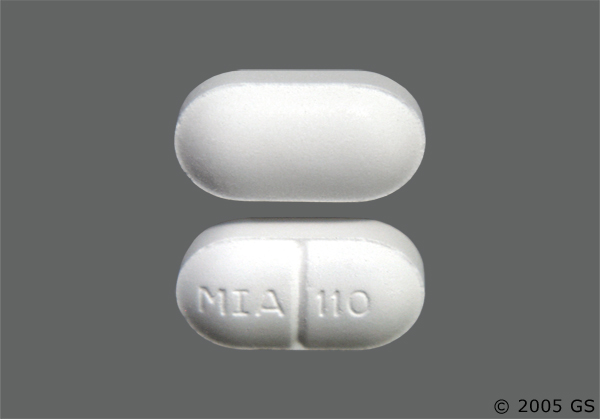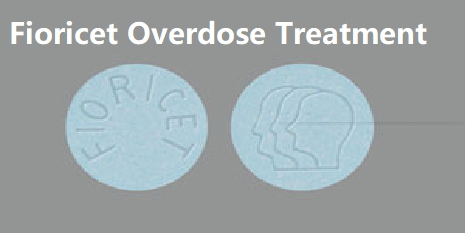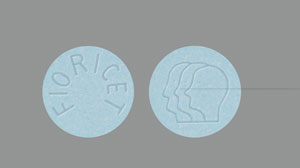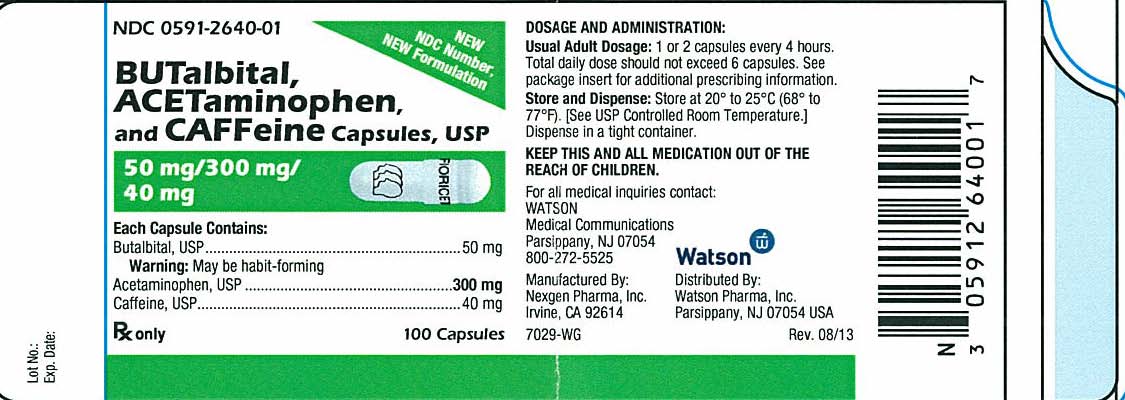Brand Fioricet is very expensive, most of online pharmacies do not sell fioricet brand directly but they sell generic fioricet. Generic fioricet has the same headache relief effects as brand fioricet. Ordergabapentin.net does not dispense nor prescribe medication directly. It is still a US licensed pharmacy who has the final authorization to approve or deny prescription requests.
A lot of patients pain suffers like to order Gabapentin, fioricet online. Because pain is very popular in North America, and almost every person has pain experience. We all take Advil, Tylenol, aspirin to relive our pain. But some kinds of pain can not be relived by this kind of over the counter pain medicines. We have to find another kind of pain medications.
We all know fioricet is good for headaches, and Gabapentin is good for nerve pain relief. But fioricet, Gabapentin need prescription from doctor. A lot of people even fire fighters do not have insurance to cover their doctor fee. A lot of street pharmacies have much more expensive Gabapentin, Fioricet than online Gabapentin, and Fioricet.
When you order Fioricet, Gabapentin online, please remember to complete the health condition questionnaire very honestly and carefully. It would be best if You already have the experience of taking fioricet from your local pharmacies and your local doctors have prescribed this medicine before. You should know the side effects and drug interaction before you order cheap fioricet online.
Fioricet® (Watson Laboratories, Inc) is a combination tablet consisting of 40 mg of caffeine (1,3,7–trimethylxanthine), 325 mg of acetaminophen, and 50 mg of butalbital (5-allyl-5-isopropylbarbituric acid). Fioricet® is primarily intended as treatment for tension headaches.
Fioricet contains Butalbital, Acetaminophen, and caffeine. Butalbital is some kind of Barbiturate. The average daily dose for the barbiturate addict is usually about 1500 mg. One tablet of fioricet only contains 50mg butalbital, and the max dosage for fioricet per day is six tablets.
If you take the max dosage of fioricet, the butalbital dosage is 300mg. It is not easy to get additive if you take max dosage of fioricet. The body mainly absorbs butalbital through the gastrointestinal tract, and then it is moved to most tissues in the body.
Butalbital leaves the body primarily through the kidneys as a drug that hasn’t been broken down. Most of patients already have the experience of taking fioricet and they only refill fioricet for their tension headache, migraine, even cluster headache.
We suggest you have your local doctors check your health conditions and write you a fioricet prescription at first time. You can refill online when your health conditions are not changed. But if your health condition changes, please go to your local doctors to check whether it is OK for you to refill Fioricet online.
You must complete your health questionnaires very carefully or you may give the doctor wrong information. Your tel number is very important for Doctors because they may discuss your health condition with you.
Where and How to Buy Fioricet ?
Fioricet is a prescription medication that contains a combination of acetaminophen, butalbital, and caffeine. As such, it cannot be purchased over the counter without a prescription from a licensed healthcare provider. Here are the typical steps to obtain Fioricet:
- Consult a healthcare provider: If you believe Fioricet may be a suitable treatment for your tension headaches or migraines, schedule an appointment with a healthcare provider. This may be a primary care physician, neurologist, or another healthcare professional.
- Discuss your symptoms: During your appointment, discuss your symptoms, medical history, and any previous treatments you’ve tried for headaches. Be open and honest with your healthcare provider to ensure they have all the information needed to make an informed treatment recommendation.
- Receive a prescription: If your healthcare provider determines that Fioricet is an appropriate treatment option for you, they will write you a prescription. The prescription will include instructions for how to take Fioricet, including dosage and frequency.
- Fill your prescription at a pharmacy: Take your prescription to a pharmacy to have it filled. Make sure to provide the pharmacist with your insurance information, if applicable, to determine coverage and out-of-pocket costs.
- Follow dosage instructions: Take Fioricet exactly as prescribed by your healthcare provider. Do not exceed the recommended dosage or take it more frequently than prescribed, as this can increase the risk of side effects and dependency.
- Monitor for effectiveness and side effects: Pay attention to how Fioricet affects your headaches and any side effects you may experience. Report any concerns or adverse reactions to your healthcare provider.
- Refill your prescription as needed: If Fioricet is effective in managing your headaches and your healthcare provider approves, you can refill your prescription as needed. Make sure to monitor your medication supply and plan ahead to avoid running out.
It’s important to note that purchasing Fioricet without a prescription or from unauthorized sources is illegal and unsafe. Always obtain Fioricet from a licensed pharmacy with a valid prescription from a healthcare provider. Additionally, be cautious of online pharmacies that offer Fioricet without a prescription, as these may be operating illegally and selling counterfeit or substandard medications.
What you should know before you buy Fioricet online ?
Do not use Fioricet if you have taken an MAO inhibitor in the past 14 days. A dangerous drug interaction could occur. MAO inhibitors include isocarboxazid, linezolid, phenelzine, rasagiline, selegiline, and tranylcypromine.
You should not use Fioricet if you are allergic to acetaminophen, butalbital, or caffeine, if you have porphyria, or if you have recently used alcohol, sedatives, tranquilizers, or other narcotic medications.
To make sure Fioricet is safe for you, tell your doctor if you have:
-
-
- liver disease, cirrhosis, a history of alcoholism or drug addiction, or if you drink more than 3 alcoholic beverages per day;
- kidney disease;
- asthma, sleep apnea, or other breathing disorder;
- stomach ulcer or bleeding;
- a history of skin rash caused by any medication;
- a history of mental illness or suicidal thoughts; or
- if you use medicine to prevent blood clots.
-
It is not known whether Fioricet will harm an unborn baby. If you use butalbital while you are pregnant, your baby could become dependent on the drug. This can cause life-threatening withdrawal symptoms in the baby after it is born. Babies born dependent on habit-forming medicine may need medical treatment for several weeks. Tell your doctor if you are pregnant or plan to become pregnant.
This medicine can pass into breast milk and may harm a nursing baby. Tell your doctor if you are breast-feeding a baby.
Before taking acetaminophen, Butalbital, Caffeine,
-
-
- tell your doctor and pharmacist if you are allergic to acetaminophen, butalbital, caffeine, or any other drugs.
- tell your doctor and pharmacist what prescription and nonprescription medications you are taking, especially anticoagulants (‘blood thinners’) such as warfarin (Coumadin), antidepressants, antihistamines, pain medications, sedatives, sleeping pills, tranquilizers, and vitamins. Many nonprescription pain relievers contain acetaminophen. Too much of this drug can be harmful.
- tell your doctor if you have or have ever had liver disease, porphyria, or depression.
- tell your doctor if you are pregnant, plan to become pregnant, or are breast-feeding. If you become pregnant while taking this medication, call your doctor.
- you should know that this drug may make you drowsy. Do not drive a car or operate machinery until you know how this drug affects you.
- remember that alcohol can add to the drowsiness caused by this drug.
-
Acetaminophen, Butalbital, Caffeine may cause an upset stomach. Take this medicine with food or milk.
Take the missed dose as soon as you remember it. However, if it is almost time for the next dose, skip the missed dose and continue your regular dosing schedule. Do not take a double dose to make up for a missed one.
How Should I Take Fioricet?
Take Fioricet exactly as prescribed. Follow all directions on your prescription label. Do not take more of this medication than recommended. An overdose can damage your liver or cause death. Tell your doctor if the medicine seems to stop working as well in relieving your pain.
Butalbital may be habit-forming. Never share Fioricet with another person, especially someone with a history of drug abuse or addiction. Keep the medication in a place where others cannot get to it. Selling or giving away Fioricet is against the law.
Take Fioricet with food or milk if it upsets your stomach.
Store Fioricet at room temperature away from moisture and heat.
Keep track of the amount of medicine used from each new bottle. Butalbital is a drug of abuse and you should be aware if anyone is using your medicine improperly or without a prescription.
Fioricet dosing information
Usual Adult Dose of Fioricet for Headache:
Acetaminophen 300 mg, butalbital 50 mg, and caffeine 40 mg: 1 or 2 capsule(s) orally every 4 hours as needed. Maximum daily dose: 6 doses. Acetaminophen 325 mg, butalbital 50 mg, and caffeine 40 mg: 1 or 2 tablet(s), capsule(s), or tablespoonful(s) orally every 4 hours. Maximum daily dose: 6 doses Acetaminophen 500 mg, butalbital 50 mg, and caffeine 40 mg: 1 tablet or capsule orally every 4 hours. Maximum daily dose: 6 doses Acetaminophen 750 mg, butalbital 50 mg, and caffeine 40 mg: 1 tablet orally every 4 hours. Maximum daily dose: 5 tablets
Usual Pediatric Dose of Fioricet for Headache:
12 years and older: Acetaminophen 300 mg, butalbital 50 mg, and caffeine 40 mg: 1 or 2 capsule(s) orally every 4 hours as needed. Maximum daily dose: 6 doses.
What happens if I miss a dose?
Since this medicine is used when needed, you may not be on a dosing schedule. If you are on a schedule, use the missed dose as soon as you remember. Skip the missed dose if it is almost time for your next scheduled dose. Do not use extra medicine to make up the missed dose.
What Happens if I Overdose?
Seek emergency medical attention or call the Poison Help line at 1-800-222-1222. An overdose of Fioricet can be fatal.
The first signs of an acetaminophen overdose include loss of appetite, nausea, vomiting, stomach pain, sweating, and confusion or weakness. Later symptoms may include pain in your upper stomach, dark urine, and yellowing of your skin or the whites of your eyes.
Overdose symptoms may also include insomnia, restlessness, tremor, diarrhea, increased shallow breathing, uneven heartbeats, seizure (convulsions), or fainting.
What should I avoid while taking Fioricet?
This medication can cause side effects that may impair your thinking or reactions. Be careful if you drive or do anything that requires you to be awake and alert.
Avoid drinking alcohol. It may increase your risk of liver damage while taking acetaminophen.
Ask a doctor or pharmacist before using any other cold, allergy, pain, or sleep medication. Acetaminophen (sometimes abbreviated as APAP) is contained in many combination medicines. Taking certain products together can cause you to get too much acetaminophen which can lead to a fatal overdose. Check the label to see if a medicine contains acetaminophen or APAP.
While you are taking this medication, avoid taking diet pills, caffeine pills, or other stimulants (such as ADHD medications) without your doctor’s advice.
Fioricet Side Effects
Fioricet is a prescription medication used to relieve tension headaches. It works by relaxing muscle contractions that can result in mild to moderate head pain.

Fioricet (butalbital, acetaminophen, and caffeine capsule) is a combination of a barbiturate, a non-salicylate analgesic and antipyretic, and a central nervous system stimulant indicated for the relief of the symptom complex of tension (or muscle contraction) headache. Common side effects of Esgic include:
-
- drowsiness
- lightheadedness
- dizziness, sedation
- shortness of breath
- nausea
- vomiting
- abdominal pain, and
- intoxicated feeling
The dose of Fioricet is one or two capsules every four hours. The total daily dosage of Fioricet should not exceed 6 capsules.
Fioricet may interact with monoamine oxidase (MAO) inhibitors, other narcotic analgesics, alcohol, general anesthetics, tranquilizers such as chlordiazepoxide, sedative-hypnotics, or other CNS depressants. Tell your doctor all medications and supplements you use. During pregnancy, Fioricet should be taken only if prescribed. It is unknown if it would affect a fetus. All the drugs in Fioricet pass into breast milk, and breastfeeding while taking Fioricet is not recommended. Withdrawal symptoms may occur if you suddenly stop taking Fioricet.
Barbiturates may be habit-forming: Tolerance, psychological dependence, and physical dependence may occur especially following prolonged use of high doses of barbiturates. The average daily dose for the barbiturate addict is usually about 1500 mg.
As tolerance to barbiturates develops, the amount needed to maintain the same level of intoxication increases; tolerance to a fatal dosage, however, does not increase more than two-fold. As this occurs, the margin between an intoxication dosage and fatal dosage becomes smaller.
The lethal dose of a barbiturate is far less if alcohol is also ingested. Major withdrawal symptoms (convulsions and delirium) may occur within 16 hours and last up to 5 days after abrupt cessation of these drugs. Intensity of withdrawal symptoms gradually declines over a period of approximately 15 days. Treatment of barbiturate dependence consists of cautious and gradual withdrawal of the drug.
Barbiturate-dependent patients can be withdrawn by using a number of different withdrawal regimens. One method involves initiating treatment at the patient’s regular dosage level and gradually decreasing the daily dosage as tolerated by the patient.
Acetaminophen
Acetaminophen is rapidly absorbed from the gastrointestinal tract and is distributed throughout most body tissues. The plasma half-life is 1.25 to 3 hours, but may be increased by liver damage and following overdosage. Elimination of acetaminophen is principally by liver metabolism (conjugation) and subsequent renal excretion of metabolites. Approximately 85% of an oral dose appears in the urine within 24 hours of administration, most as the glucuronide conjugate, with small amounts of other conjugates and unchanged drug.
Caffeine
Like most xanthines, caffeine is rapidly absorbed and distributed in all body tissues and fluids, including the CNS, fetal tissues, and breast milk.
Caffeine is cleared through metabolism and excretion in the urine. The plasma half-life is about 3 hours. Hepatic biotransformation prior to excretion, results in about equal amounts of 1-methylxanthine and 1-methyluric acid. Of the 70% of the dose that is recovered in the urine, only 3% is unchanged drug.
Fioricet Overdose Treatment

What are the Symptoms of a Fioricet Overdose?
While butalbital is the addictive ingredient in Fioricet, acetaminophen is the ingredient which is liable to cause an overdose. Unfortunately, people who misuse Fioricet as a recreational drug or as a way to suppress withdrawal are most likely to suffer an overdose.
When a person overdoses on Fioricet, the acetaminophen will damage their liver. In severe cases, an overdose can even provoke fatal liver failure. For this reason, it is dangerous to take Fioricet together with another medication which contains acetaminophen because it increases the risk of overdose and death. Furthermore, drinking alcohol while taking Fioricet may also inflict liver damage.
A Fioricet overdose is a medical emergency, so it’s important to know the symptoms. An overdose on Fioricet and all other forms of liver failure cause jaundice, the yellowing of the skin and eyes. Other symptoms of an overdose include:
-
-
- Confusion
- Convulsions and seizures
- Fainting
- Irregular heartbeat
- Lack of appetite
- Nausea and vomiting
- Restlessness
- Stomach pain
- Sweating
-
How is Fioricet Overdose Treated?
In the event of Fioricet overdose, most of the treatment is supportive. Medical practitioners will attempt to stabilize the patient according to the symptoms they present.
If the primary symptoms of overdose are due to the barbiturate effects (sedation, reduced respiratory rate), treatments include activated charcoal, bemegride, glucose, and thiamine are often given — however, most treatment is purely supportive.
The patient may need to be hooked up to an automatic respirator to ensure their body is receiving enough oxygen while they’re unconscious.
If instead, the primary symptoms appear to be the result of acetaminophen, a compound called N-Acetyl-Cysteine (NAC) is used.
NAC is an amino acid that serves as one of the primary precursors for liver enzymes responsible for metabolizing acetaminophen. It’s also thought to bind to and neutralize the toxic metabolite of acetaminophen (N-acetyl-p-benzoquinoneimine) to prevent further damage. By supplying this amino acid in high intravenous doses, the liver may be able to metabolize the drug more effectively, thus reducing the chances of permanent liver damage.
In some cases of extreme overdose, a liver transplant may be necessary.









